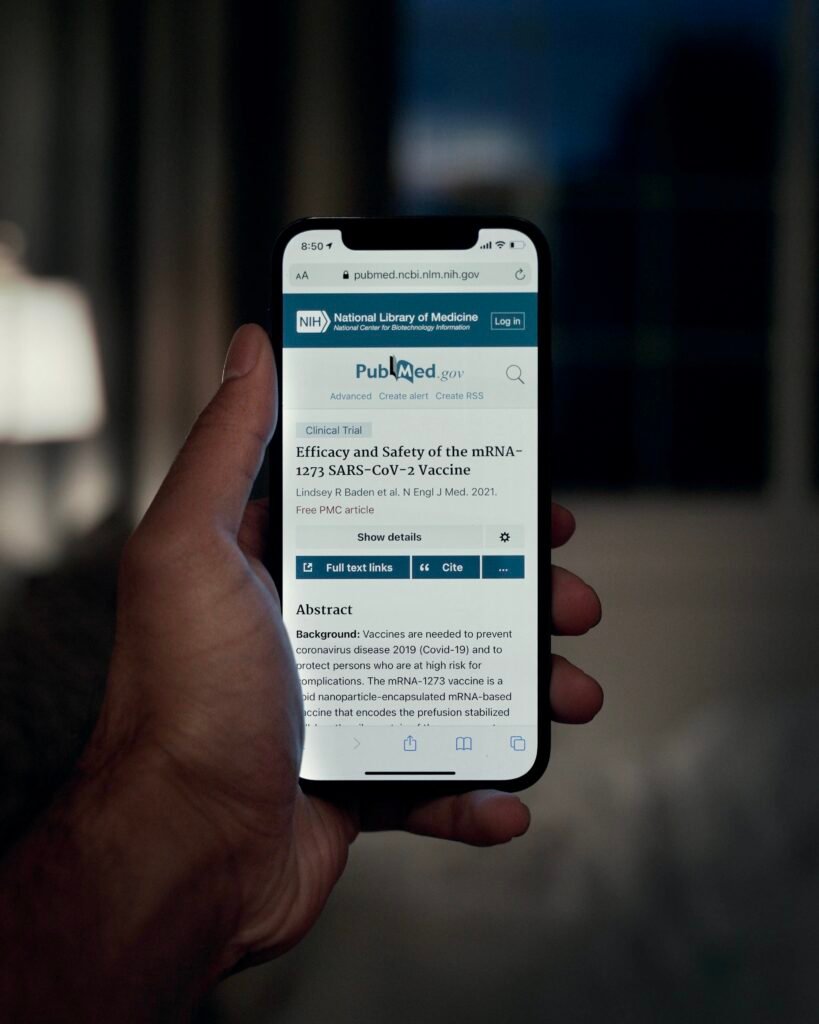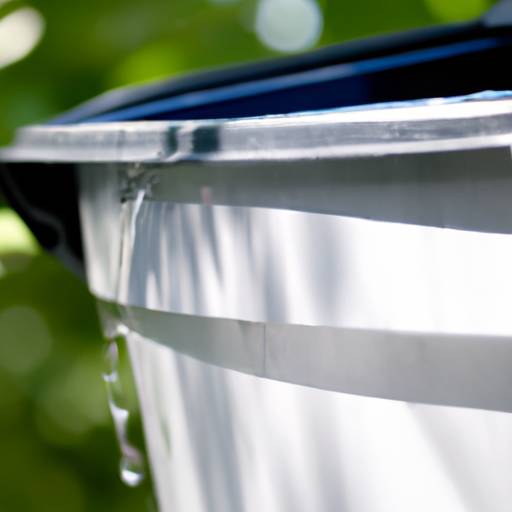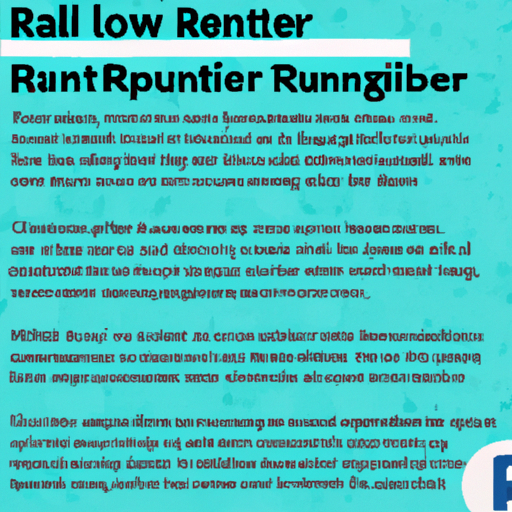Dealing With Common Issues
August 18, 2023 | by rainwatercollectionsystem.com

In “Dealing with Common Issues,” we understand that problems can arise when it comes to water management. At Rain Water Collection System, we are here to help you tackle those issues head-on. With our expertise in designing, installing, and maintaining rainwater collection systems, we are dedicated to providing sustainable water solutions that benefit both the environment and your everyday life. From residential to commercial and industrial applications, our cutting-edge systems seamlessly integrate into your property, reducing reliance on traditional water sources and offering practical advantages such as lower utility bills and a smaller carbon footprint. With our team of skilled professionals and commitment to exceptional customer service, we ensure that your rainwater collection system functions optimally for years to come. Join us in creating a greener and more sustainable water future while enjoying the benefits of efficient water utilization.
Dealing with Common Issues
No matter how well-maintained your home is, it’s inevitable that you will encounter some common issues along the way. From plumbing problems to electrical issues, heating and cooling troubles to pest infestations, there are a plethora of challenges that homeowners may face. In this article, we will explore some of the most common issues and provide helpful tips on how to deal with them effectively.
1. Plumbing Problems
Plumbing issues can range from minor inconveniences to major headaches. Leaky faucets, clogged drains, and low water pressure are some of the most common plumbing problems that many homeowners encounter.
1.1 Leaky Faucets
A leaky faucet not only wastes water but can also be quite irritating. The constant dripping sound can keep you awake at night and cause your water bill to spike. Fortunately, fixing a leaky faucet is relatively simple. Start by turning off the water supply to the faucet and then disassemble it to inspect the components. Oftentimes, a worn-out washer or O-ring is the culprit. Replace the damaged part and reassemble the faucet. If this doesn’t solve the issue, it may be time to call a professional plumber.
1.2 Clogged Drains
Clogged drains are another common plumbing problem that many homeowners have to deal with. Hair, soap scum, food particles, and grease can accumulate in the drain over time, leading to a blockage. To unclog a drain, you can try using a plunger or a drain snake. If these DIY methods don’t work, you may need to use chemical drain cleaners or call a professional plumber for assistance.
1.3 Low Water Pressure
Low water pressure can be quite frustrating, especially when you’re trying to take a shower or wash dishes. The first step in dealing with low water pressure is to check if the issue is isolated to one faucet or if it’s a problem throughout the entire house. If it’s isolated to one faucet, you may need to clean or replace the aerator. If the low water pressure is a widespread issue, it could be due to a problem with the main water supply line or a clog in the pipes. In such cases, it’s best to consult with a professional plumber to identify and resolve the underlying cause of the low water pressure.

2. Electrical Issues
Electrical issues can be dangerous and should be addressed promptly to ensure the safety of your home and family. Power outages, flickering lights, and tripping circuit breakers are among the most common electrical problems homeowners may face.
2.1 Power Outages
Power outages can be caused by a variety of factors, such as severe weather conditions, equipment failure, or overloaded circuits. If you experience a power outage, the first step is to check if it’s a problem with your home or if it’s a widespread issue affecting your entire neighborhood. In the case of a widespread outage, contacting your electricity provider is the best course of action. If the power outage is limited to your home only, check your circuit breakers or fuses to see if they have tripped. If resetting the breakers or replacing the fuses doesn’t solve the problem, it’s important to contact a licensed electrician to investigate further.
2.2 Flickering Lights
Flickering lights can be a nuisance and may be an indicator of an underlying electrical problem. Loose or faulty light bulbs, improper wiring, voltage fluctuations, or issues with the electrical panel can all cause lights to flicker. Start by checking if the light bulb is securely screwed in and if it’s the correct wattage for the fixture. If the issue persists, it’s best to consult with an electrician to ensure that there are no wiring or electrical panel issues that need attention.
2.3 Tripping Circuit Breakers
Tripping circuit breakers are a safety mechanism that protects your home from electrical overloads. If you’re experiencing frequent circuit breaker trips, it could be due to overloaded circuits, faulty wiring, or a malfunctioning appliance. To troubleshoot, try unplugging some devices from the overloaded circuit and redistributing the electrical load. If the circuit breaker continues to trip, it’s important to call an electrician to inspect the wiring and identify the root cause of the problem.
3. Heating and Cooling Troubles
Maintaining a comfortable temperature in your home is crucial for your overall comfort and well-being. Inconsistent temperatures, noisy HVAC systems, and frequent HVAC repairs are some of the common heating and cooling troubles homeowners may encounter.
3.1 Inconsistent Temperature
If you find that certain areas of your home are significantly cooler or warmer than others, you may be dealing with an inconsistent temperature issue. Inconsistent temperatures can be caused by a variety of factors, such as improper insulation, air leaks, or an outdated HVAC system. Start by checking for any visible air leaks around windows, doors, and ducts. Adding weatherstripping or caulking can help seal these leaks and improve the temperature consistency in your home. If the issue persists, it may be time to upgrade your HVAC system or consult with an HVAC professional for further assistance.
3.2 Noisy HVAC System
A noisy HVAC system can be quite bothersome, especially if it disrupts your sleep or daily activities. HVAC noise can be caused by a variety of reasons, including loose components, worn-out parts, or improper maintenance. Regular maintenance, such as cleaning or replacing air filters, lubricating moving parts, and tightening loose screws or bolts, can help reduce noise levels. If the noise persists, it’s best to have an HVAC technician inspect the system and identify any issues that may require repair or replacement.
3.3 Frequent HVAC Repairs
If you find yourself constantly calling for HVAC repairs, it may be a sign that your system is aging or not functioning optimally. Frequent HVAC repairs can also be an indicator of improper maintenance or air quality issues. Regularly changing air filters, cleaning vents, and scheduling professional HVAC maintenance can help prevent unnecessary repairs and prolong the lifespan of your system. However, if you’re experiencing frequent breakdowns or your system is more than 10-15 years old, it may be time to consider replacing the HVAC system with a more efficient and reliable model.

4. Pest Infestations
Pest infestations can turn your home into a nightmare. From ants invading your kitchen to cockroaches lurking in the corners, and mice or rats making themselves comfortable in your living spaces, dealing with pests can be both challenging and unpleasant.
4.1 Ants
Ants are a common household pest that can easily find their way into your home in search of food and water. To prevent ant infestations, it’s important to keep your kitchen and dining areas clean and food properly stored. Seal any cracks or openings where ants can enter your home, and consider using ant baits or non-toxic deterrents to keep them at bay. If the infestation persists, it may be necessary to call a professional pest control service to effectively eliminate the ant colony from your home.
4.2 Cockroaches
Cockroaches are notorious for their resilience and ability to multiply rapidly. These nocturnal pests can contaminate your food, spread diseases, and leave behind an unpleasant odor. Proper sanitation and cleanliness are key in preventing cockroach infestations. Keep your kitchen clean, store food in airtight containers, and eliminate any standing water or moisture sources. If you’re dealing with a severe cockroach infestation, it’s best to consult with a professional pest control service to implement effective extermination methods and prevent recurrence.
4.3 Mice or Rats
Mice or rats can cause significant damage to your home, chew through electrical wires, and contaminate your food with their droppings and urine. To prevent mice or rat infestations, it’s important to seal any cracks or openings in your home’s exterior that may serve as their entry points. Keep your home clean and free of clutter, store food in tightly sealed containers, and eliminate any potential nesting areas. Traps and rodenticides can be effective in dealing with a small infestation, but for larger or persistent problems, it’s recommended to seek the services of a professional pest control company to ensure complete eradication.
5. Mold and Mildew
Mold and mildew can cause a variety of health issues and can also damage your home’s structure and aesthetics. Bathrooms, basements, and attics are particularly susceptible to mold and mildew growth due to the presence of moisture and poor ventilation.
5.1 Bathroom Mold
Bathroom mold is a common problem due to the high humidity levels and limited ventilation. To prevent mold growth in the bathroom, it’s important to keep the area well-ventilated by using exhaust fans or opening windows. Wipe down any excess moisture on surfaces, such as shower walls and curtains, and regularly clean and disinfect bathroom fixtures. If you notice mold growth, it’s important to address it promptly by scrubbing the affected areas with a mixture of water and bleach or using commercial mold removal products. If the problem persists, it’s advisable to consult with a professional mold remediation service to identify and address any underlying moisture issues.
5.2 Basement Mold
Basement mold is often caused by water seepage, high humidity, or inadequate ventilation, making it a common issue for many homeowners. Preventive measures such as sealing any cracks or gaps in the basement walls or floors, improving drainage around the foundation, and using dehumidifiers can help minimize the risk of mold growth. If you already have mold in your basement, it’s important to address the moisture source and clean the affected areas thoroughly. In more severe cases, it’s recommended to hire a professional mold remediation company to assess the extent of the mold growth and provide effective remediation solutions.
5.3 Attic Mold
Attic mold is often caused by poor ventilation and insulation issues. Improperly vented attics can trap moisture, leading to mold growth. To prevent attic mold, it’s important to ensure proper ventilation by installing ridge vents, soffit vents, or attic fans. Insulating the attic properly can also help regulate temperature and prevent condensation. If you suspect attic mold, it’s important to address it promptly by hiring a professional mold remediation company. They will be able to assess the extent of the mold growth, identify the underlying cause, and recommend appropriate remediation methods to ensure a mold-free attic.

6. Structural Issues
Structural issues can significantly impact the integrity and safety of your home. Cracks in walls, foundation settling, and roof leaks are some common structural issues that homeowners may encounter.
6.1 Cracks in Walls
Cracks in walls can be caused by a variety of factors, such as settling, moisture, temperature fluctuations, or foundation issues. It’s important to inspect any cracks in your walls to determine their severity. Small, hairline cracks are generally considered normal and can be easily repaired with paint or wall putty. However, if you notice large, horizontal, or jagged cracks, it may indicate a more serious structural problem that requires the attention of a professional contractor or structural engineer.
6.2 Foundation Settling
Foundation settling is a common issue that can lead to cracked walls, uneven floors, and doors or windows that don’t close properly. Signs of foundation settling may include cracks in the foundation, sloping floors, or gaps between the walls and floor. If you suspect foundation settling, it’s important to consult with a professional foundation repair company. They will be able to assess the extent of the settling and recommend appropriate measures to stabilize the foundation, such as underpinning or installing support piers.
6.3 Roof Leaks
Roof leaks can cause significant damage to your home if left unaddressed. Common causes of roof leaks include damaged or missing shingles, worn-out flashing, or clogged gutters. Regular roof inspections and maintenance can help prevent roof leaks and prolong the lifespan of your roof. If you notice signs of a roof leak, such as water stains on the ceiling or walls, it’s important to address the issue promptly. Depending on the extent of the damage, you may need to repair or replace the affected roof components. Hiring a professional roofer can ensure that the repairs are done safely and effectively.
7. Home Security Concerns
Ensuring the safety and security of your home should be a top priority. Burglary prevention, security system malfunctions, and door and window locks are some common home security concerns.
7.1 Burglary Prevention
Burglary prevention is essential to protect your home and belongings. Simple measures such as installing deadbolt locks on all exterior doors, securing windows with locks or security film, and installing motion sensor lights can deter burglars. It’s also important to maintain the appearance of an occupied home, even when you’re away, by using timers for lights and having a neighbor collect your mail. Consider investing in a home security system for added protection and peace of mind. Research different systems available on the market and choose one that best fits your needs and budget.
7.2 Security System Malfunctions
Security system malfunctions can undermine the effectiveness of your home security measures. False alarms, system errors, and faulty sensors are common issues that homeowners may encounter. To prevent security system malfunctions, it’s important to regularly test the system and inspect the sensors for any damage or wear. Make sure that all components are properly connected and that the system is armed and disarmed correctly. If you experience persistent issues with your security system, it’s best to contact the manufacturer or a professional security system technician for assistance.
7.3 Door and Window Locks
Door and window locks are the first line of defense against intruders. Ensure that all exterior doors have sturdy deadbolt locks installed. Consider reinforcing your door frames with strike plates and security plates for added strength. Windows should have locks or security devices to prevent them from being easily opened from the outside. Regularly check the condition of your locks and promptly repair or replace any damaged or malfunctioning locks. It’s also important to maintain the privacy of your home by keeping curtains or blinds closed, especially at night.

8. Appliance Troubleshooting
Appliances are essential for the smooth functioning of your home, but they can occasionally malfunction. Refrigerators not cooling, washers not draining, and ovens not heating are some common appliance issues that homeowners may face.
8.1 Refrigerator Not Cooling
A refrigerator not cooling can be a major inconvenience, potentially leading to spoiled food and financial loss. The first step in troubleshooting this issue is to ensure that the refrigerator is properly plugged in and that the temperature settings are correctly adjusted. Check for any obstructions in the vents or coils at the back of the refrigerator and clean them if necessary. If the issue persists, it may indicate a faulty compressor or refrigerant leak, which will require the services of a professional appliance repair technician.
8.2 Washer Not Draining
A washer not draining can be frustrating, as it means you won’t be able to complete your laundry efficiently. Start by checking if there’s any debris or clothing items clogging the drain pump or filter. Clean out any obstructions and ensure that the drain hose is securely connected and not kinked. If the washer still doesn’t drain, it may indicate a problem with the pump or a faulty control board. In such cases, it’s best to call an appliance repair technician to diagnose and fix the issue.
8.3 Oven Not Heating
An oven not heating can put a damper on your cooking plans. Start by checking if the oven is properly connected to a power source and all control settings are correct. Ensure that the oven door is fully closed and that the seal/gasket is intact. If the oven is still not heating, it could be due to a faulty heating element or a malfunctioning thermostat. In such cases, it’s advisable to contact an appliance repair technician to diagnose and resolve the issue.
10. Home Maintenance Tips
Proactive home maintenance is key to preventing common issues and prolonging the lifespan of your home’s systems and components. Establishing a regular cleaning schedule, following a seasonal maintenance checklist, and knowing when to tackle DIY repairs versus hiring professionals can save you time, money, and future headaches.
10.1 Regular Cleaning Schedule
A regular cleaning schedule is essential to maintain a clean and healthy living environment. Create a cleaning checklist that includes tasks such as dusting, vacuuming, mopping, and sanitizing surfaces. Pay special attention to high-trafficked areas, bathrooms, and kitchen areas, as these tend to accumulate dirt and germs more quickly. Regularly cleaning air vents, filters, and fans can also improve indoor air quality and prevent issues such as allergies or poor ventilation.
10.2 Seasonal Maintenance Checklist
Seasonal maintenance is important to keep your home in top shape throughout the year. Create a checklist that includes tasks specific to each season. For example, in the spring, you may want to focus on cleaning gutters, inspecting the roof for any damage, and preparing your garden for planting. In the fall, tasks such as cleaning out the chimney, sealing gaps in windows and doors, and winterizing outdoor plumbing may be on the list. By following a seasonal maintenance checklist, you can catch any potential issues early and prevent them from turning into larger problems.
10.3 DIY Repairs vs. Hiring Professionals
When it comes to home repairs, it’s important to assess your skills and comfort level with DIY projects. Simple tasks such as changing light bulbs, unclogging drains, or painting walls can often be done by homeowners with basic tools and knowledge. However, for more complex projects or issues that require specialized skills, it’s best to hire professionals. Electrical work, plumbing repairs, or major structural renovations should always be left to trained and licensed professionals. Investing in the services of experienced contractors or technicians can save you time, money, and potential safety hazards.
In conclusion, dealing with common issues in your home can be frustrating, but with the right knowledge and resources, you can tackle them effectively. From plumbing problems to electrical issues, heating and cooling troubles to pest infestations, mold and mildew to structural issues, home security concerns, and appliance troubleshooting, there are solutions available for every situation. By staying proactive with home maintenance and knowing when to seek professional help, you can ensure a safe, comfortable, and well-maintained living environment for you and your family.
RELATED POSTS
View all





